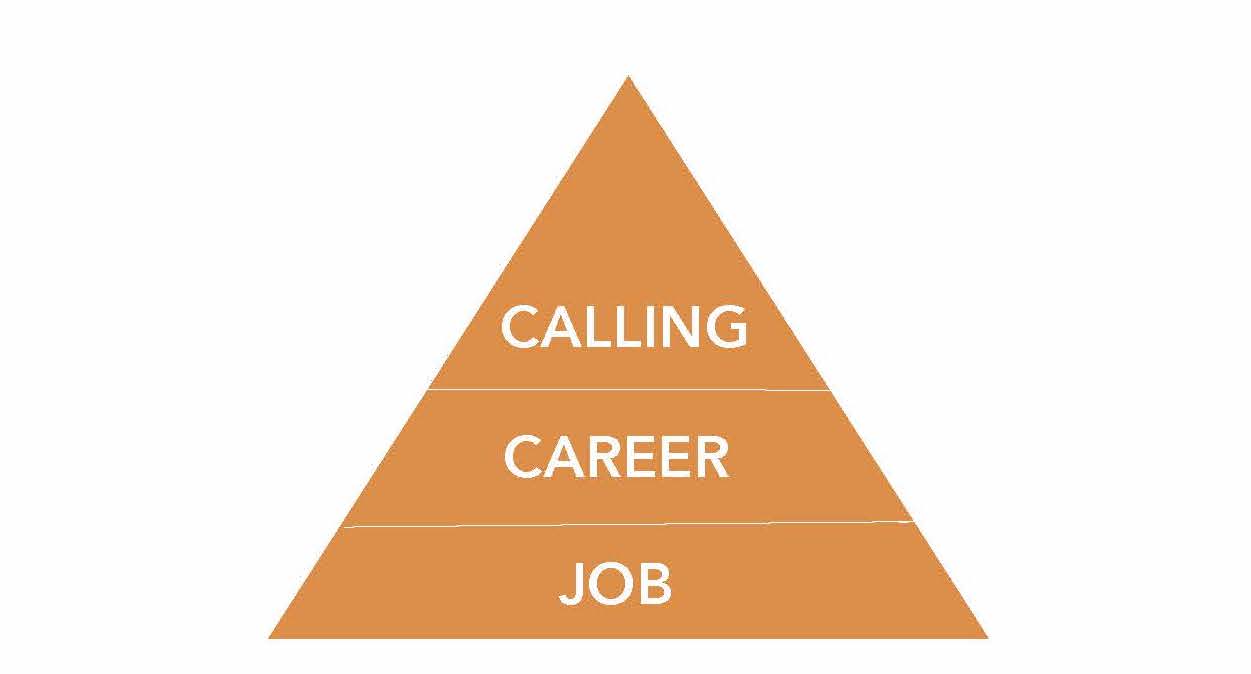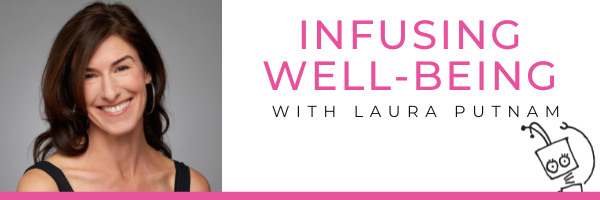|
Martha Graham once said: “If I could say it, I wouldn’t have to dance it.” The work that she did as a modern dance choreographer was a manifestation of her deepest calling. That’s great for her, but what about for the rest of us? Can we all say that we are living out our deepest calling? Sadly, most of can’t say that we are. If asked “Are you excited about work when you get up in the morning?”, only 20% of us can give an enthusiastic “Yes!”. And now in the time of “The Great Resignation” – when millions of Americans are quitting their jobs in search of something more meaningful – this has only gotten worse. Career well-being, or loving what you do, is considered by Gallup to be the “trump card” to our well-being. Those who are thriving in their career are 50% more likely to be thriving overall. Dr. Amy Wrzesniewski, professor at Yale School of Management and expert on work identity, has identified three levels of work satisfaction: job, career or calling. If asked, where would you say that you fall? And, what's going to make the difference in moving up the pyramid? This is something I recently chatted about with Pete Seljevold and Elizabeth Magee at Blue Cross Blue Shield of ND on their newly launched BeWell Podcast series. Here's a snapshot of what we discussed. It’s a job. If you’re on this level, your work pays you, provides some benefits and perhaps some social perks. But, the overriding reason why you clock in day in and day out is to collect on your paycheck. Sure, there might be other interests and sources of meaning outside of your work – family, friends, hobbies. But, considering that most of your waking hours are likely spent at work, this is a tough place to be – and your coworkers, your employer and customers aren’t benefiting from it either. It’s a career. On this level, the focus starts to get longer term. You’re likely setting goals and engaging in some (hopefully) healthy competition with your coworkers to move ahead. You’re willing to put up with office politics as long as it looks good on your resume, but you may be quick to leave for a better salary or title. This is my calling. Once you’ve ascended to this level, you feel a deep alignment between your vocation and who you are as a human being. Your work is deeply personal and you feel a strong emotional connection to it. You’re willing to work hard, knowing that the work that you do is essential to making the world a better place. Not surprisingly, you’re in the group that is the most likely to be satisfied with their professional life – and healthier for it. How many people fall into each category? Interestingly enough, you cannot necessarily predict where someone is on this pyramid based on title or income alone. In fact, Wrzesniewski’s research has found that most professions are fairly evenly divided—with about a third of workers falling into each category. What can you do to move up the pyramid? 1. Change your outlook. If you’re feeling stuck, try changing your mindset. OK, so easier said than done. Right? Well, maybe not. The internal messaging that we engage in and the words that we say externally express can make a difference. One of the most famous examples of this is the story of John F. Kennedy’s conversation with a janitor at the NASA Space Center in 1962. When asked what he was doing, the janitor responded with, “Well, Mr. President, I'm helping put a man on the moon." This one story reminds all of us about living a bigger life just by changing our outlook. 2. Leverage your superpowers. Those people who are channeling their inner Martha Graham, that is, leveraging their superpowers every day as she did, are 6X more likely to be highly engaged with their work. This requires effort on your part, of course, but it also requires support from your boss and your employer. Identifying and leveraging your strengths is part of “job crafting.” This is the process of taking proactive actions to redesign what you do so that you feel greater job satisfaction, are more engaged in your work and more likely to have a high level of career well-being. The more your boss is on board, the better. But, a step that you can take for yourself is to try filling in the blank: “The best part of my workday is when I ________.” 3. Foster friendships on the job. And, not just friendships, but best friendships. Those individuals who have a best friend at work are 7X more likely to be highly engaged in the work that they do. If you’re a boss and you want to build a high-performing team, then take the time to foster collegiality within your team. Carve out time for fun. You might even try what Dave Owings, Advanced Database Administrator at Blue Cross Blue Shield of North Dakota, does. Every Friday is “Funday Friday” – a time for his team to just have some fun together. It might be meeting up at a park or taking a moment to share with one another good things that have happened that day. These seemingly trivial investments in being human on the job can go a long way in boosting career well-being and moving everyone a little closer toward work becoming a calling, as opposed to just a job. LP, Aspiring professional dancer, NYC, 1999. As one who literally did try to follow in the footsteps of Martha Graham and make it as a professional dancer, I’ve learned that there are a lot of ways to manifest the “If I could say it, I wouldn’t have to dance it” mentality – even if it’s not actually on the stage. It’s reminding myself every day of how I'm making the world a better place, albeit in small ways. It’s taking the time to identify what I do best – bringing enthusiasm, humor and playfulness to the forefront – and finding small ways to do this every day. And, it’s about finding and naming my best friends at work. These seemingly small things, over time, make all the difference. Text MOTION to 66866 to join my monthly newsletter. It may just be the healthiest thing to land in your inbox all month! And, as a thank you, I'll share my ME AT MY BEST® Guide with you.
0 Comments
Leave a Reply. |
Follow laura on social:Website by Brand Genie
|
join laura's monthly newsletter
|






